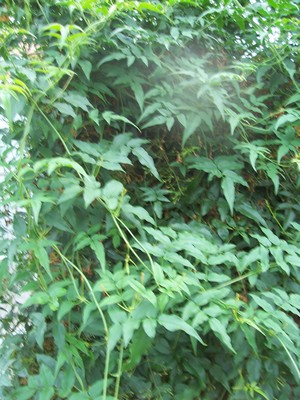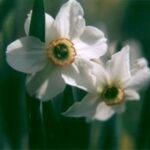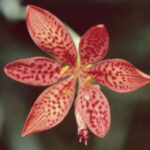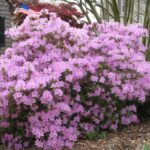The jasmine family has always been known for the powerful fragrance of its flowers. Many species of jasmine are not hardy in most of the country, however Jasminum x stephanense will tolerate colder temperatures. This fast growing, lush vine with fragrant pink blooms is easy to grow.
Jasminum x stephanense is reliably hardy in zones 7-10, however it will also survive a harsh zone 6 winter, dying back to the ground and then sprouting new growth from the roots in spring. In zones 8 and above, it is often evergreen. This vine has a twining habit and will grow to almost fifteen feet, forming a thick tangle of delicate green foliage. Flowers are small flaring tubes colored in pale pink, and produce the classic jasmine fragrance. When grown on a porch lattice or inside a greenhouse, the fragrance can be almost overwhelming.
Soil should be well drained and loamy. Fertilizer is usually not needed, and a high nitrogen fertilizer can be detrimental to flower formation. A simple yearly mulch of compost will keep this plant quite happy. Jasmine prefers to grow in full sun or partial shade. A moderate amount of water is needed in the summertime, with older vines able to get by on less. In very wet climates, soil good soil drainage is essential for survival.
Jasmine will overwinter in zones 5 and 6, dying back to the ground and growing new vines from the roots in spring. Flowering may be delayed or absent the year after a complete die back, so winter protection is important if reliable yearly blooming is required. This involves untangling the plant form its supports, lightly pruning it, then wrapping securely in plastic and covering with about two feet of mulch after laying it on the ground. Begin checking in late April or early May for signs of growth. After the last frost, unwrap the vine and gently tie it back to its growing supports. Jasmine x stephanense can also be grown in a large pot and moved to a cold but not freezing location for the winter, such as a sheltered porch or garage. Some vines are simply more vigorous than others, and will still bloom after extensive winter damage.
Propagation is done by cuttings or layering. Layering is the easiest technique. In early spring, pull down a young vigorous vine and lay it flat on the ground. Cover the middle third of the vine with four to six inches of dirt. Check for rooting at the end of summer. If the jasmine is well rooted, cut it away from the parent plant, and protect with mulch for the winter. Semi-hardwood cuttings are taken in early to mid summer. Each cutting should have two nodes (the places where the leaves meet) and rooting hormone should be used. Pot up in well drained soil, and mist periodically every day. A heat mat will provide faster rooting but is not absolutely necessary.








